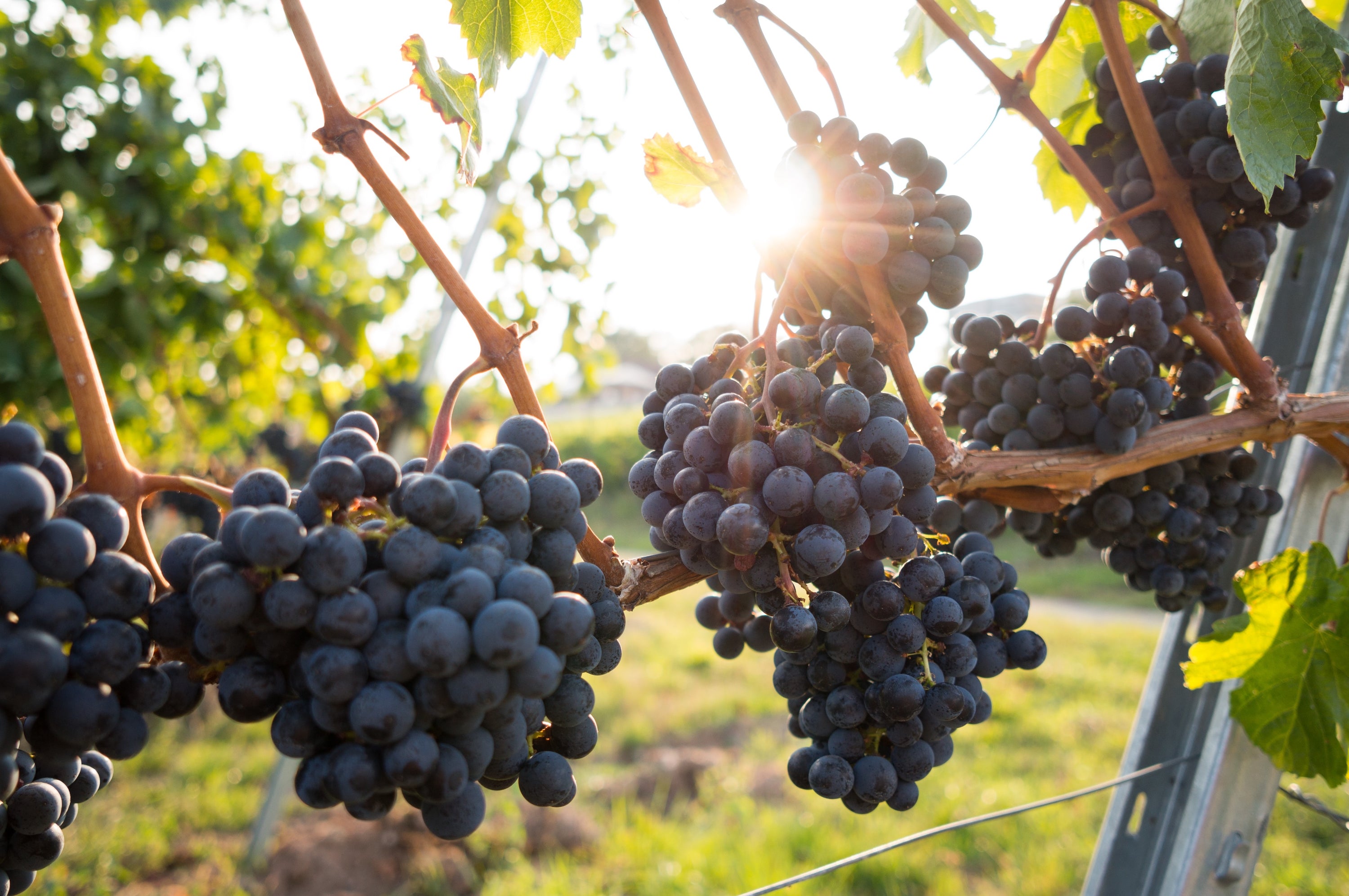Your bag is empty
Already have an account? Log in to check out faster.
Already have an account? Log in to check out faster.
With nearly two centuries of winegrowing under their belt, the Poiron-Dabin family’s roots in the Loire Valley run deep. The family’s history as vignerons is documented as early as 1858, though it remains likely that their experience in the area extends back further. The modern winery traces its origins to the marriage of Jean Poiron to Thérèse Dabin in 1962. The couple later purchased the Domaine de Chantegrolle in 1990 and relocated operations to their newly acquired facility. It was around this time that their sons, Jean-Michel and Laurent, joined the family business. Jean and Thérèse each retired around the turn of the millennium, passing the baton to the two brothers, who continue to steward the estate today.
Poiron-Dabin is located in the small Château-Thébaud subzone of the prestigious Muscadet Sèvre-et-Maine appellation. Here, they find a unique quartz-rich, crumbly yellow granite soil that not only allows the winery to produce rich, fleshy expressions of Muscadet, but also a host of other varieties, including their precious Berligou that they rescued from extinction. Extremely conscious of the land they farm, Poiron-Dabin has been recognized by the French Ministry of Agriculture with two sustainability certifications, High Environmental Value (HVE) and Terra Vitis (read on for more on the latter).

Berligou is said to have been first introduced to the Loire Valley in 1460, a time when today’s France was separated into the king’s dominion and a series of duchies. Charles I, Duke of Burgundy-to-be, presented his cousin, François II, Duke of Brittany, with Berligou vines, plucked from Pinot Noir’s ancestral homeland of Burgundy. The gift was meant to signify the two’s alliance against King Louis XI. Eventually, the vines yielded fruit, and their resulting wines became a favorite of François II’s daughter, Anne de Bretagne, later Queen of France to two separate kings. Despite her relocation to various courts, helping unite France in the process, Anne consistently demanded Berligou at her table, helping establish the grape’s royal standing.
Generations passed, and admiration for Berligou persisted in the French royal line. Henri IV codified that status into law, declaring Berligou a vin des privilèges that could only be enjoyed at court. While such a decree solidified Berligou’s pedigree, it also limited plantings so that it was never widely grown beyond Nantes. Louis XIV later tasted the wine on a visit to the region and ordered Berligou for his home at Versailles.
When the French Revolution arrived at the end of the 1700s, Nantes was a hotbed of activity, decimating the vinescape. Over the succeeding century, Berligou became lost to history—gone with the French kings and queens who adored its wines. Only in the 1930s was the grape rediscovered when the Comte de Camiran and Joseph Picot, a local nurseryman, endeavored to find any last vines that matched the historical descriptions of Berligou. To their luck, they found a few overgrown and long abandoned plantings in a brambly field.
While Picot worked to resuscitate Berligou, multiplying its plantings in an experimental vineyard and his nursery, they were nearly all uprooted when the property changed hands in 1940 when the new ownership mistook the vines for another variety, replanting the land with Melon B. Only in the 1990s did Jean-Michel Poiron-Dabin save Berligou once again from the utter brink of extinction, identifying Picot’s nursery vines, petitioning the French government to recognize Berligou, and then planting 1.5 hectares of the grape at his property in Château-Thébaud. Today, Poiron-Dabin remains the only known producer of Berligou, continuing the legacy of this distinguished grape that long sated the palates of its most royal admirers.
With a postcard perfect serenity, the Loire Valley (or Val de Loire in French) is colloquially referred to as the “garden of France.” Here, fairytale castles dot the countryside, unfolding against ornately designed landscapes and tranquil waters. The region earns its moniker, however, for its vast agriculture bounty—producing mounds of chevre (goat cheese) and cultivating pristine vegetables and fruits, among them, of course, wine grapes. The Loire’s rich traditions of viticulture are noted as early as 77 CE, when Pliny the Elder mentions winegrowing alongside the river in his Natural History. The Catholic church continued to develop the Loire’s vineyards in the Middle Ages, and by the 15th century, at which time the French royal court was located in the Loire, the regions wines achieved great attention and renown.
It can be difficult to generalize about the Loire—France’s longest river that beings south of Lyon near the Northern Rhône Valley and extends all the way to the Atlantic. The wine region covers around 170 miles of that stretch, beginning southwest of Paris and culminating near the coast around Nantes. As the Loire flows west, the specialties alongside its banks transition from Sauvignon Blanc in Sancerre and Pouilly Fumé, Chenin Blanc in Vouvray, Cabernet Franc in Chinon and Bourgueil, and Melon B in Muscadet and the broader Pays Nantais.
It is here, in the Pays Nantais, where Poiron-Dabin cultivates its vineyards. Located in the famous Muscadet Sèvre-et-Maine appellation, and more specifically its Château-Thébaud subzone, Poiron-Dabin exists near the western extreme of French winemaking, just before the Loire River empties into the ocean. While the Pays Nantais is nearly synonymous with one grape—the white Melon B behind the various Muscadet appellations—the distinctive local terroir is fertile ground for experimentation with a host of grape varieties, among them Poiron-Dabin’s Berligou.
Established in 1998, Terra Vitis has been a driving force behind promoting environmentally friendly methods in the French wine industry. With a firm focus on sustainable vineyard management, Terra Vitis sets stringent guidelines for its member vineyards. These guidelines encompass a range of practices, including minimizing the use of synthetic chemicals, preserving biodiversity, optimizing water usage, and prioritizing the well-being of vineyard workers.

One of the core pillars of Terra Vitis is its dedication to protecting and preserving the environment. Certified vineyards employ practices that reduce chemical inputs, thus minimizing their ecological footprint. By embracing sustainable vineyard management techniques, such as natural pest control, organic fertilizers, and thoughtful water management, Terra Vitis vineyards strive to harmonize with nature, fostering the long-term health of the ecosystems surrounding their vineyards.

Terra Vitis places utmost importance on monitoring the social responsibility of winegrowers, ensuring the well-being and health of all, including employees, consumers, and neighbors. Through various actions implemented by the association and its certified winegrowers, safety standards, product quality, traceability, and the overall well-being of everyone involved are prioritized, reflecting collective reflection and shared experiences in the pursuit of sustainable development.

Terra Vitis recognizes the critical challenge of ensuring economic sustainability for wine estates, both now and for future generations. By upholding a holistic approach to viticulture, Terra Vitis supports its members in improving business viability, highlighting the value of winegrowers' work through certification. Through constant information exchange and collaboration, Terra Vitis enables the identification, refinement, and dissemination of best economic practices within the industry.